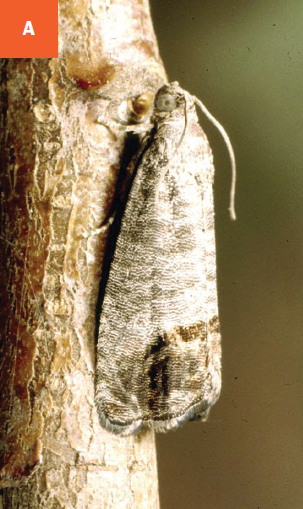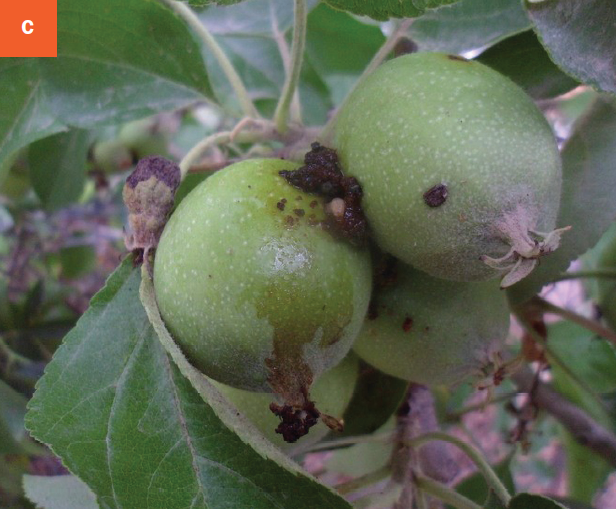Codling Moth
Cydia pomonella
HOST Apple, pear, crabapple
DAMAGE/SYMPTOMS Caterpillars tunnel inside the fruit and deposit insect excrement. Holes and egg-laying spots are also evident on the outside of the fruit.
LIFE CYCLE Codling moths overwinter as pupae in tree bark cracks and soil near trees. As temperatures warm in the spring (approximately above 50°F), adults emerge, mate and begin laying eggs near fruit sites on trees. After eggs hatch, larvae feed on leaves and shoots, and later burrow into fruit until they pupate to emerge again as adults. Depending on temperatures, there can be up to three generations in Montana per growing season.
MANAGEMENT Pick up and dispose of dropped fruit. In small plantings, individual fruits can be protected by pruning each cluster when the apples are about the size of a quarter. This can reduce larval burrowing between touching fruit. Remove small or weakly attached fruits until there are about one to two apples per cluster. Then fruit can be wrapped in nylon footlets. Staple the footlet at the top. Trees can also be wrapped in corrugated cardboard, which can help trap larvae that are leaving the apples to find a place to pupate. The cardboard should be removed and destroyed before adults emerge. Mating disruption is a management technique that involves releasing a male sex attractant into the air. This works optimally with areas of 10 acres or greater. Several contact insecticides are available for chemical control. The timing of chemical controls is critical and coincides with egg laying, which is after flowering and dependent on the number of accumulated degree days (based on weather). Never apply a chemical spray during bloom. Some reduced-risk contact insecticides include those with the active ingredients Bacillus thuringiensis (kurstaki strain), kaolin clay, horticultural oil, spinosad and the codling moth granulovirus. Other insecticides include broad-spectrum insecticides with the active ingredients carbaryl, permethrin, and malathion.
A Codling moth adult. B Codling moth caterpillar. C Codling moth damage on apples.



